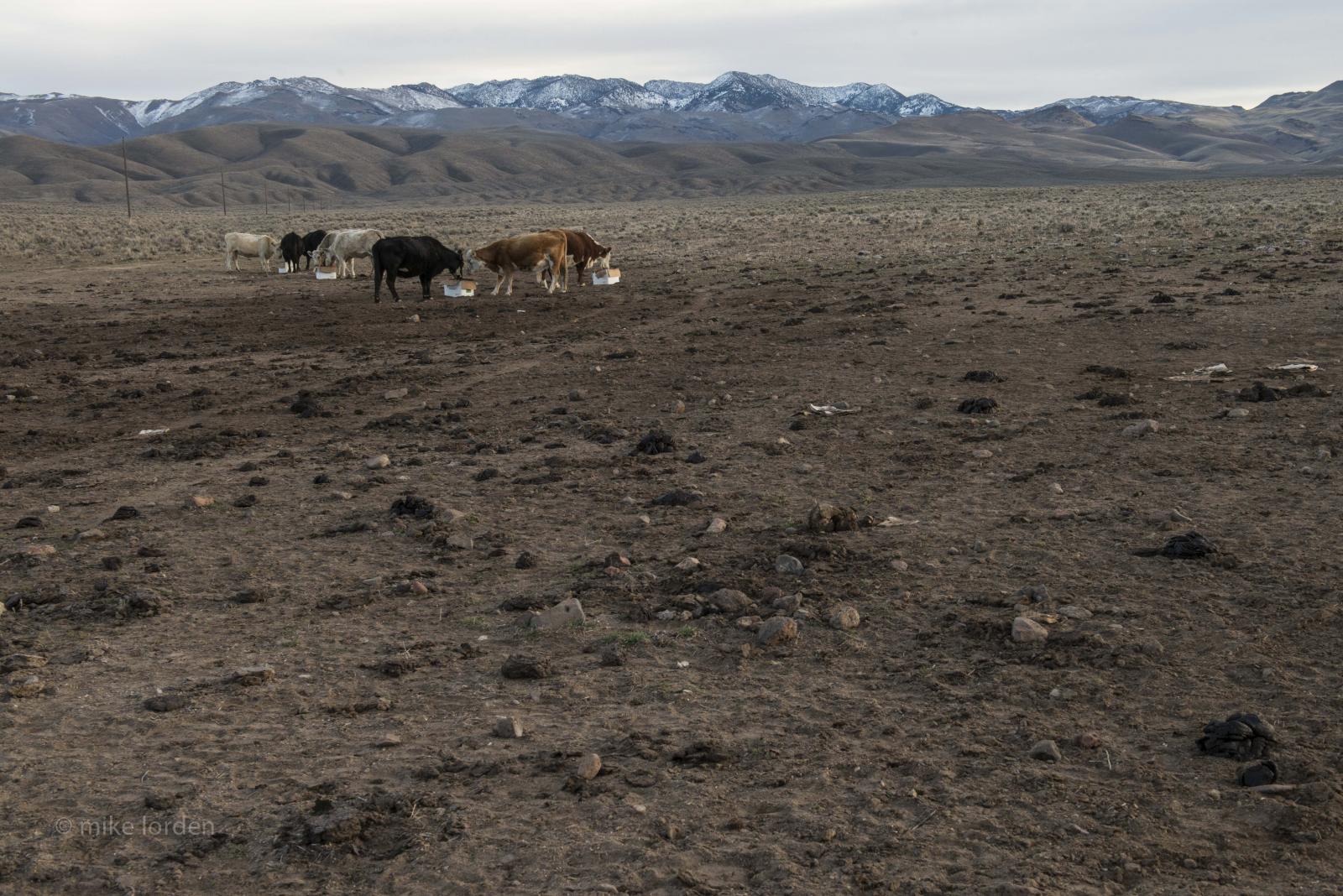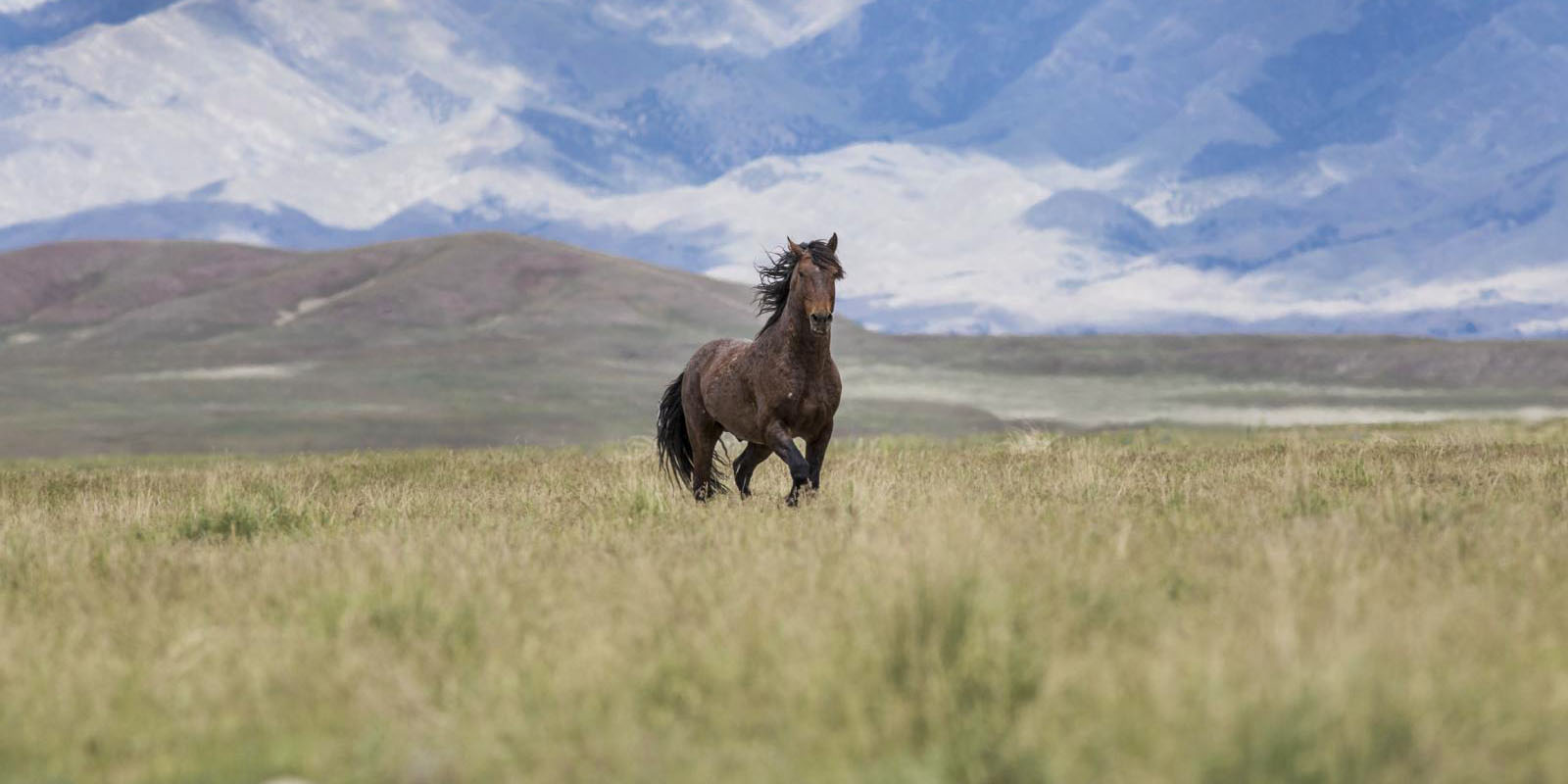The livestock operators grazing on public lands reap the taxpayer-subsidized benefits of participating in the federal government's Public Lands Grazing Program. Ranchers who graze on our public lands do so at a fraction of the going rate while the American taxpayer foots the bill.
For example:
According to the latest data from the Congressional Research Survey, the cost to graze on privately-owned land out West was $23.40 per Animal Unit Months (AUMS), or the amount of monthly forage eaten by a cow and her calf. In the Public Lands Grazing Program, ranchers can rent public land for just $1.35 per cow/calf pair.
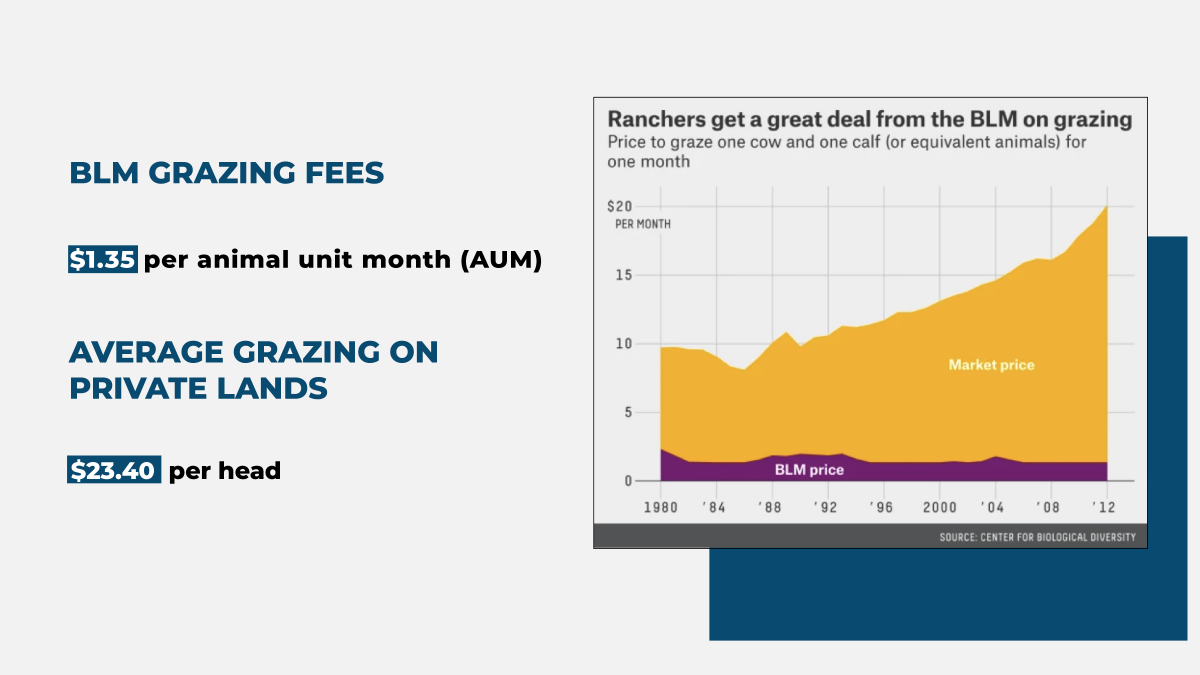
Quick facts:
- Taxpayers fund more than 90% of the cost for Commercial ranchers to graze their private livestock on public land.
- Direct government expenditures to administer public land grazing constitute an annual net loss to the taxpayers of at least $123 million and more than $500 million when indirect costs are accounted for.
- Less than 2% of the nation's beef supply comes from public lands.
How do public land ranchers affect wild horses and burros?
The BLM manages 245 million acres of public land. Livestock is allowed to graze on 155 million of those acres while wild horses are restricted to 27 million acres designated as their habitat -- shared with livestock.
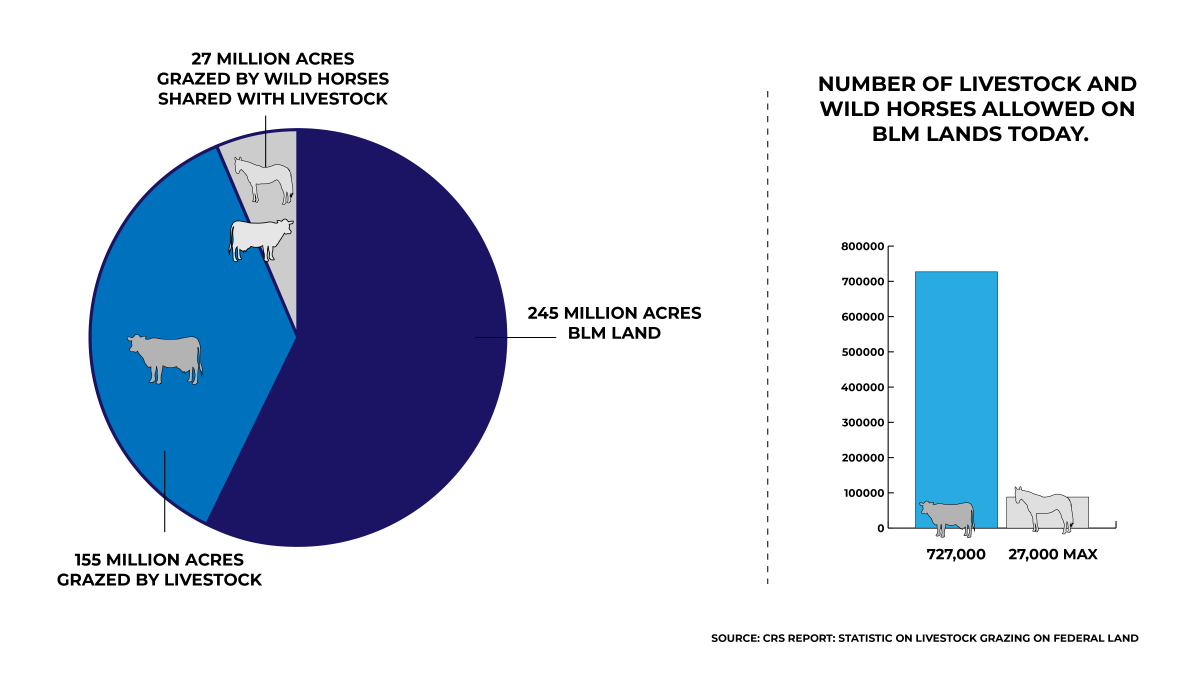
Public lands ranchers who influence BLM policy view wild horses as competition for cheap, taxpayer-subsidized livestock grazing on public lands. They want to eradicate mustangs and burros, and the BLM has been only too happy to comply.
The party line by the BLM, ranchers, and western politicians is that wild horses are overpopulating and destroying the lands. In 2019, Acting BLM Director William Perry Pendley said on an environmental panel that, "Wild horses are the existential threat to public lands". The ridiculousness of this statement becomes obvious when one considers that wild horses don’t exist on more than 88 percent of BLM lands, and where they do occur, they have to share the range with domestic livestock. Take Nevada for instance, the state with the largest population of wild horses.
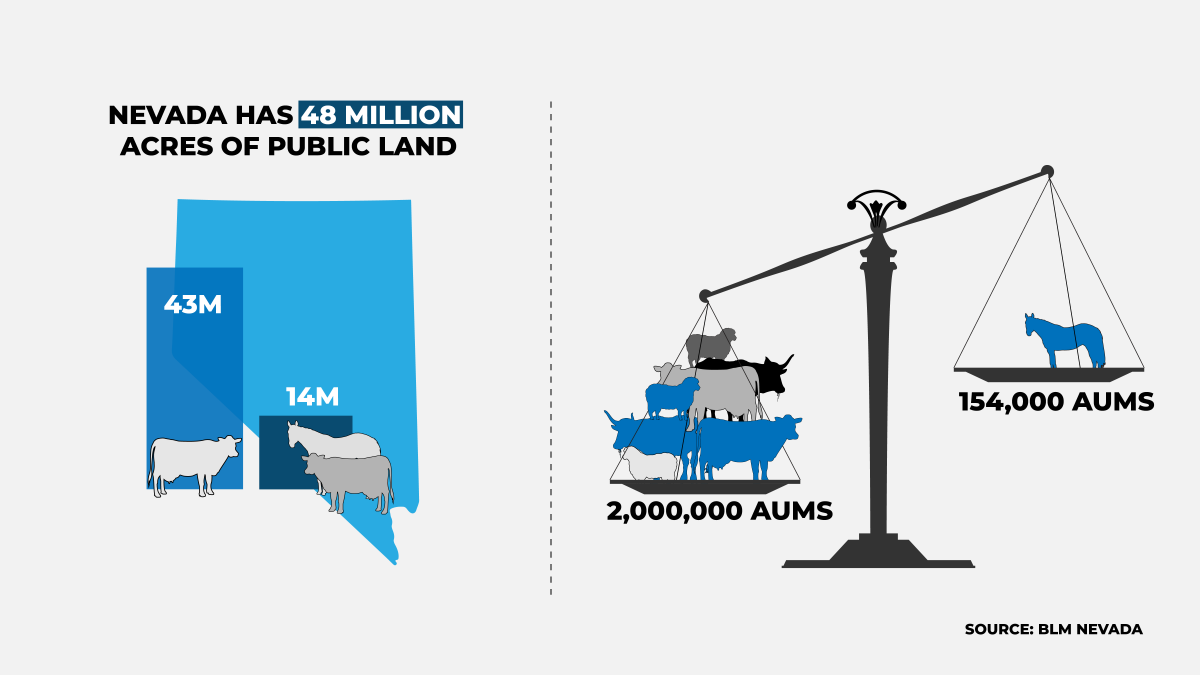
RESOURCES TO LEARN MORE:
- STUDY: Costs and Consequences: The Real Price of Livestock Grazing on America's Public Lands, Center for Biological Diversity, 2015
- STUDY: BLM Scapegoats Wild Horses for Range Damage, Public Employees for Environmental Responsibility, 2014
- This Land: How Cowboys, Capitalism, and Corruption are Ruining the American West, Christopher Ketchum, 2019
- Quick Facts: Livestock Versus Wild Horses
- BLM Email: More Livestock in Wild Horse Habitat than Wild Horses
- Ranchers Behind Roundups, Removals and Stockpiling

